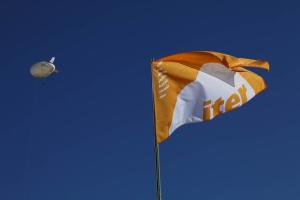ITER Members

As signatories to the ITER Agreement, the ITER collaboration Members China, the European Union, India, Japan, Korea, Russia and the United States will share in the cost of project construction, operation and decommissioning, and also share in the experimental results and any intellectual property generated by the project. Twenty years of collaborative research experiments are planned on the machine.
Europe* is responsible for the largest portion of construction costs (45.6 percent); the remainder is shared equally by China, India, Japan, Korea, Russia and the United States (9.1 percent each). The Members contribute very little monetary contribution to the project: instead, nine-tenths of contributions are delivered to the ITER Organization in the form of completed components, systems or buildings. In this way, the scientific and industrial fabric in each Member is prepared for the step after ITER collaboration—the conception and realization of the type of prototype fusion reactor that will demonstrate industrial-scale fusion electricity within this half of the century. For all Members, the benefits of participation are significant: by contributing a portion of the project's costs, Members benefit from 100 percent of the scientific results and all generated intellectual property.
Each Member has created a Domestic Agency to fulfil its procurement responsibilities to ITER. These agencies employ their own staff, have their own budget, and contract directly with industry. Communication between the ITER Organization and the Domestic Agencies is facilitated by state-of-the-art collaborative CAD design tools, integrated project teams for specific components or projects, and video conferencing. The working language for the project is English.
Taken together, the ITER Members represent three continents, approximately 40 languages, half of the world's population and 73 percent of global gross domestic product. In the offices of the ITER Organization and the Domestic Agencies, in laboratories and in industry, literally thousands of people are working toward the success of ITER.
The ITER Organization has also concluded non-Member technical cooperation agreements with Australia (through the Australian Nuclear Science and Technology Organisation, ANSTO in 2016); Kazakhstan (through Kazakhstan's National Nuclear Center in 2017 and extended for five years in 2025), and Canada (2020).
*Update January 2025: The nations participating in ITER include the 27 member countries of the European Union plus China, India, Japan, Korea, the Russian Federation, and the United States. Switzerland: Whereas Switzerland participated in the ITER Project through the Euratom research and training program and the European Joint Undertaking for ITER (Fusion for Energy) from 2014 to 2020, negotiations on a continued association agreement after that date were not conclusive. With a status of “non-associated third country” Switzerland was considered by Europe to be a non-participating member in ITER construction. This changed with the conclusion of negotiations on the association of Switzerland to the Euratom research and training program in late 2024. As of 2026, Switzerland will again become a full member of Fusion for Energy, allowing Swiss companies and research institutes to take part in the ITER project. (See the announcement here.) United Kingdom: Following Brexit, and the subsequent withdrawal from Euratom, the United Kingdom discontinued its participation in the ITER project. In September 2023, the United Kingdom announced that while it will no longer pursue an association agreement with Euratom, it will seek to continue and enhance its international partnerships, including with ITER. For the present, the ITER Project is honouring any existing contracts with UK companies and research institutes but not concluding new contracts.
Members: Domestic Agencies
Click on the flags to visit the websites of the seven ITER Domestic Agencies.










